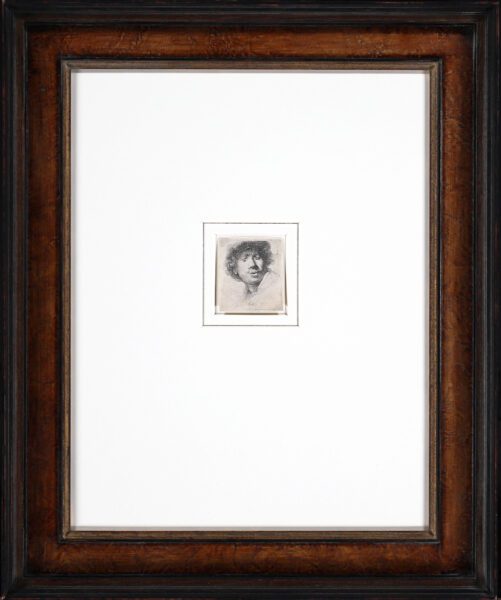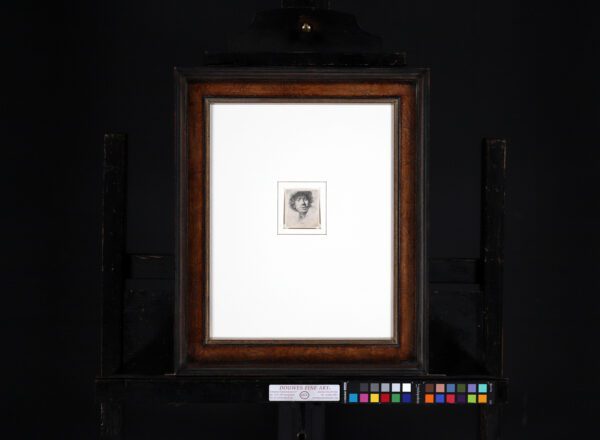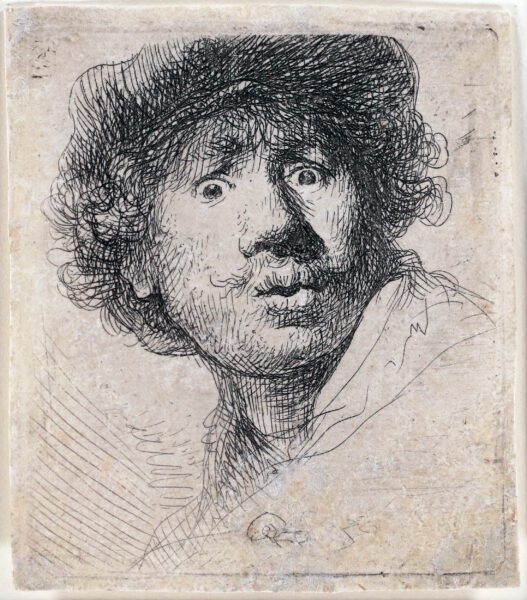“Self-Portrait in a Cap, Wide-Eyed and Open-Mouthed”, 1630
etching and drypoint on laid paper: 5,4 x 4,6 cm
signed in monogram and dated lower centre: RHL 1630
"*" indicates required fields
Notes
This is a small masterpiece of Rembrandt’s early etchings. The expression of this physiognomic study made by his etching needle could not be more livelike as the facial expression (perhaps “astonishment”) is in perfect harmony with the round shape of the face. Rembrandt knows exactly how to hit every tonal gradation with fine, arching strokes.
Of all the self-portraits in which Rembrandt depicts emotions, this one is probably the most engaging. He looks startled here, with pursed lips and wide-open eyes. You see him slightly from below, so that he seems to be recoiling. The etching is clearly executed and clever, with the contours of the shoulders and the cap fading into the edges.
During his lifetime, Rembrandt’s extraordinary skills as a printmaker were the main source of his international fame. Unlike his oil paintings, prints travelled light and were relatively cheap. For this reason, they soon became very popular with collectors not only within but also beyond the borders of the Netherlands.
Rembrandt’s etchings are remarkable for their high number of self-portraits (over 30 out of about 290). These are particularly collectible, perhaps due to the smaller number of states as well as the artist’s compelling and powerful presence. Unlike his stately religious scenes, or regal, posed portraits of others, which exhibit his careful and calculating brilliance as an etcher, Rembrandt’s self-portraits reveal him as an artist and a man. In them he assumes the role of the experimenting artist, approaching the most difficult of subjects – himself. These self-portraits are often described as ethereal and wistful for their notable contrasting areas of high and low etched space.
A very fine impression of this famous small portrait in the second (final) state, printing clearly, just beginning to show a little wear on the tip of the nose, with narrow margins.
Literature
Bartsch 320; Hind 32;
The New Hollstein Dutch no. 69: Seceond state (of II)
Plate not in existence – with Nowell-Usticke (1967):
RRR – a very rare little plate
Provenance
- Private collection, Germany
- Private collection, The Netherlands





